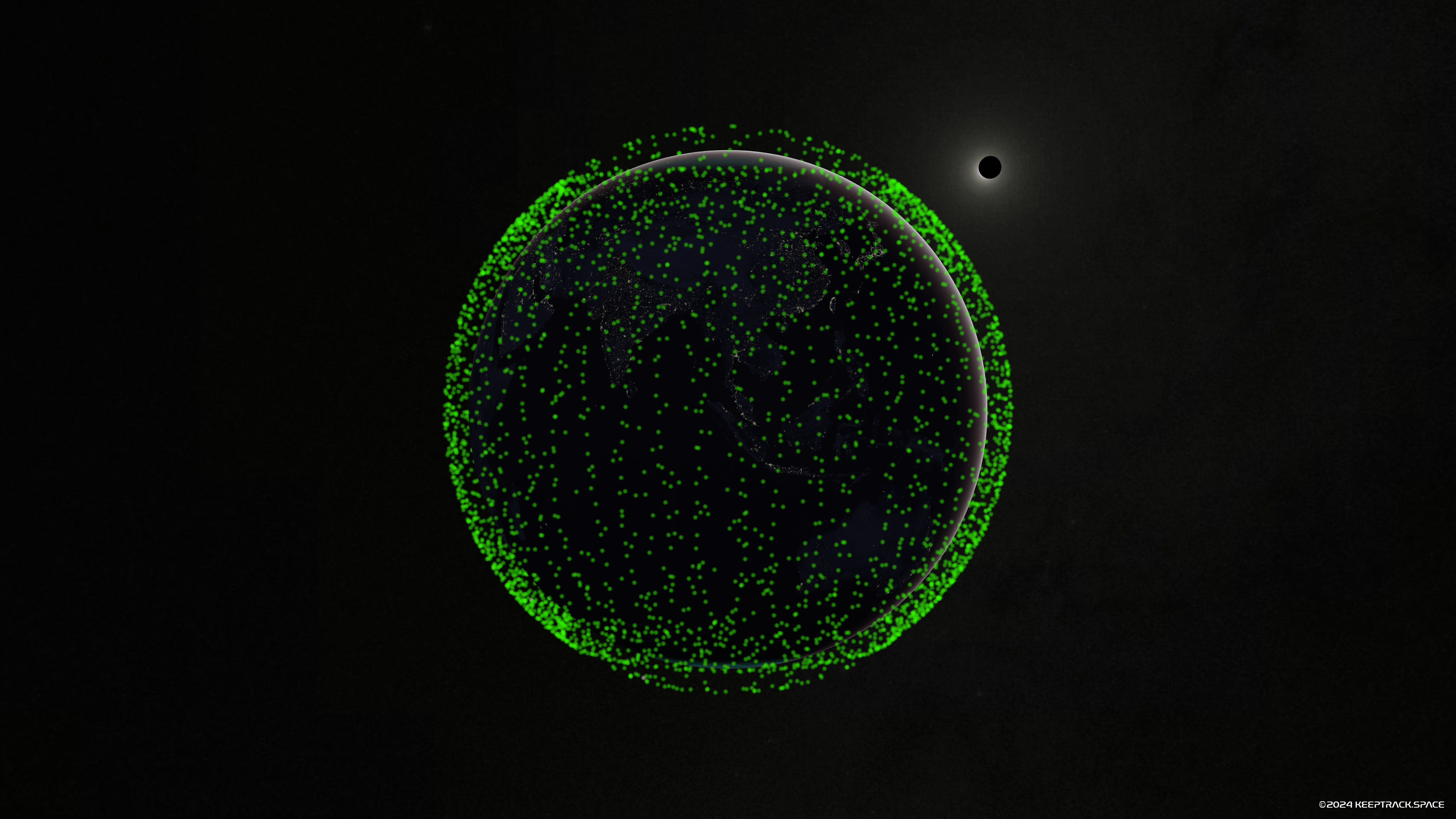· space brief · 5 min read
Space Brief 27 Aug 2024
Today's highlights include the destruction of ABL Space Systems' rocket due to engine leaks, Firefly Aerospace's lunar lander pre-launch tests, and insights on U.S. military's space domain awareness enhancements.

📄Top Stories
- ABL Space Systems rocket destroyed by fire due to engine leaks.
- Ongoing divide between military and commercial space sectors.
- U.S. needs improved space domain awareness, experts say.
- Firefly Aerospace’s lunar lander begins pre-launch environmental tests.
📰Detailed Coverage
Fire Destroys ABL Space Systems Rocket
A catastrophic fire fueled by leaking engines has destroyed an ABL Space Systems rocket. The company is currently investigating the incident, which occurred during a critical test phase. ABL Space Systems had been gearing up for an important launch, making this a significant setback.
Technical experts suggest that the design and integration of propulsion systems will be scrutinized closely. This incident underlines the importance of rigorous testing and quality checks in rocket engineering.
Read the full story: SpaceNews
Military-Commercial Space Divide Continues
Despite policy pushes, the gap between military and commercial space sectors persists. Experts highlight the different priorities and operational approaches as key barriers to integration. While commercial entities focus on innovation and rapid deployment, military operations prioritize security and resilience.
This ongoing divide can affect satellite tracking and data-sharing practices. Understanding the impact on satellite management is crucial for space situational awareness. Our web app provides tools that facilitate the tracking and coordination of multiple satellites, aiding both industries.
Read the full story: SpaceNews
U.S. Needs Improved Space Domain Awareness
Experts argue that the U.S. military’s space domain awareness is not meeting current demands. As the number of satellites and space debris increases, timely and accurate tracking becomes essential for space operations and national security.
Efforts are underway to enhance tracking capabilities and integrate new technologies. Our web app features real-time tracking and collision avoidance tools that can support these initiatives, providing comprehensive data for better decision-making.
Read the full story: SpaceNews
Firefly Aerospace’s Lunar Lander Prepares for Launch
Firefly Aerospace has begun pre-launch environmental tests for its lunar lander, a crucial step before its scheduled mission to the Moon. These tests ensure the lander’s systems can withstand the harsh conditions of space and lunar environments.
The successful completion of these tests will mark a significant milestone in Firefly’s efforts to contribute to lunar exploration. For those interested in tracking this mission, our web app will provide up-to-date data and mission progress once the lander is launched.
Read the full story: SpaceNews
🛰️Satellite Spotlight
- Satellite Name: LIZZIESAT
- NORAD ID: 59132
- International Designator: 2024-043AL
- Launch Date: 2024-07-14
- Mission: Earth observation and technology demonstration
- Orbit:
- Inclination: 97.4831°
- Period: 94.8076 minutes
- RAAN: 1.9203°
- Owner/Operator: SIDUS
- Interesting Facts:
- LIZZIESAT is designed for Earth observation, contributing valuable data for environmental monitoring and research.
- It incorporates cutting-edge technology to capture high-resolution imagery.
- The satellite is part of a constellation aimed at enhancing global observational capabilities.
Current TLE Data:
1 59132U 24043AL 24238.88220383 .00006842 00000-0 33070-3 0 99992
2 59132 97.4831 1.9203 0013491 45.3782 314.8550 15.18865716 26389
Track this satellite in real-time on our web app: Track LIZZIESAT
🗑️Space Debris Update
Current tracked debris objects: 14002
No significant space debris events today.
🚀Upcoming Space Launches
August 28
- SpaceX Falcon 9:
- Starlink Group 8-6 from Cape Canaveral (05:50 UTC) A batch of 21 satellites for the Starlink mega-constellation - SpaceX’s project for space-based Internet communication system.
- Starlink Group 9-5 from Vandenberg (06:04 UTC) A batch of 21 satellites for the Starlink mega-constellation - SpaceX’s project for space-based Internet communication system.
- Polaris Dawn from Kennedy Space Center (07:38 UTC) First mission of the privately funded Polaris program. This mission will carry out the first commercial spacewalk.
August 29
- Galactic Energy Ceres-1S | Unknown Payload from Haiyang Spaceport (05:10 UTC)
- Blue Origin New Shepard | NS-26 from West Texas Launch Site (13:00 UTC) This suborbital flight will carry six passengers.
August 30
- SpaceX Falcon 9 | NROL-113 from Vandenberg (02:51 UTC) Third batch of satellites for a reconnaissance satellite constellation built by SpaceX and Northrop Grumman for the National Reconnaissance Office to provide imaging and other reconnaissance capabilities.
August 31
- SpaceX Falcon 9 | Starlink Group 8-10 from Cape Canaveral (05:39 UTC) A batch of satellites for the Starlink mega-constellation - SpaceX’s project for space-based Internet communication system.
September 4
- Arianespace Vega | Sentinel-2C from Guiana Space Centre (01:50 UTC) Sentinel-2C is the third satellite in the Sentinel-2 constellation, which is designed to provide high-resolution optical imagery for land services.
September 11
- Mitsubishi Heavy Industries H-IIA 202 | IGS Radar 8 from Tanegashima Space Center (04:00 UTC) The IGS Radar 8 is a Japanese radar reconnaissance satellite serving both national defense and natural disaster monitoring.
- ROSCOSMOS Soyuz 2.1a | Soyuz MS-26 from Baikonur Cosmodrome (16:22 UTC) Soyuz MS-26 will carry two cosmonauts and one astronaut to the International Space Station.
Note: Launch dates and times are subject to change due to technical or weather considerations.
💡Did You Know?
The International Space Station (ISS) travels at an average speed of about 7.66 kilometers per second (4.76 miles per second) relative to Earth. At this velocity, the station completes an orbit around our planet every 92 minutes, meaning the crew aboard the ISS experiences 16 sunrises and sunsets every 24 hours!
🔬Technical Corner
Attitude Determination and Control Systems (ADCS)
Attitude Determination and Control Systems (ADCS) are crucial components of satellite operations, responsible for maintaining a satellite’s orientation in space.
Key points:
- ADCS uses sensors like star trackers, sun sensors, and gyroscopes to determine a satellite’s current orientation.
- Control is achieved through actuators such as reaction wheels, magnetorquers, and thrusters.
- ADCS is essential for maintaining communication links, pointing instruments accurately, and optimizing solar panel exposure.
- Advanced ADCS can perform complex maneuvers like Earth pointing, sun pointing, or target tracking.
- The system must be robust enough to handle disturbances like solar radiation pressure and atmospheric drag.
Understanding ADCS is critical for satellite operators and mission planners to ensure optimal performance and longevity of satellites in orbit. It plays a vital role in the success of various space missions, from Earth observation to deep space exploration.




